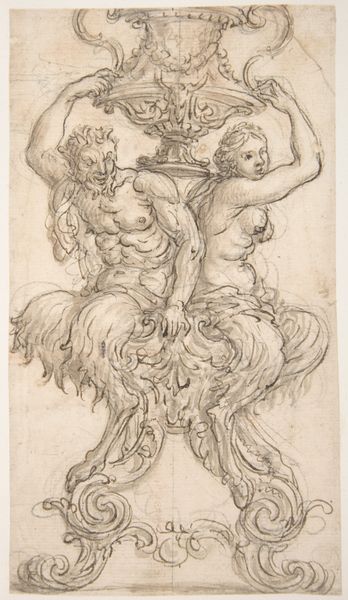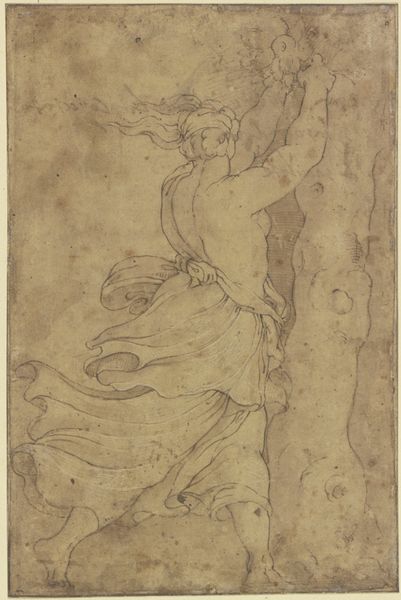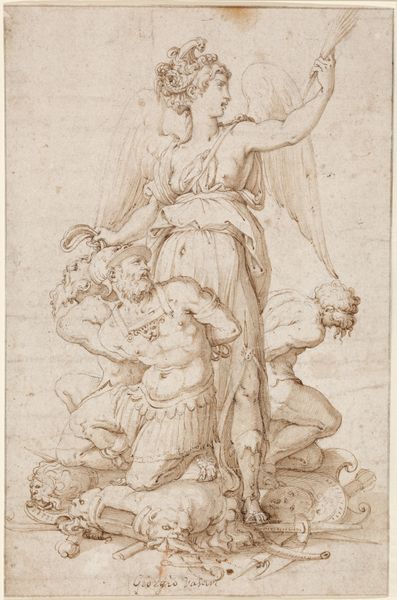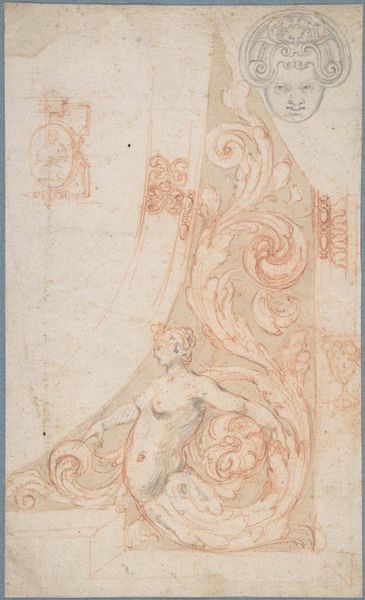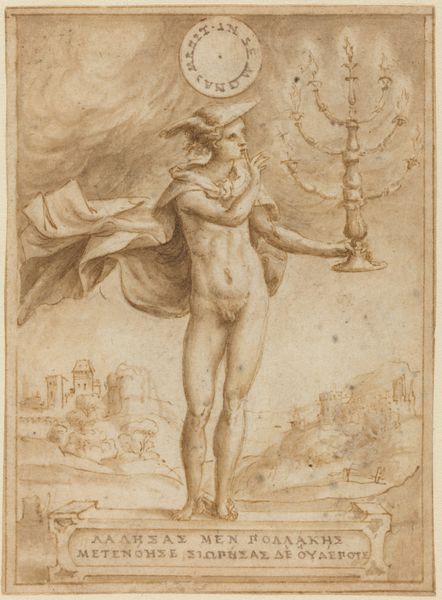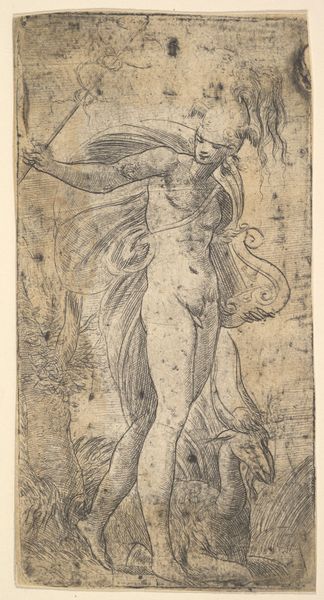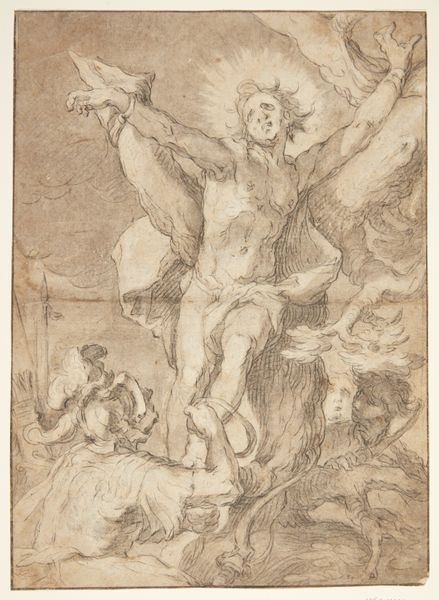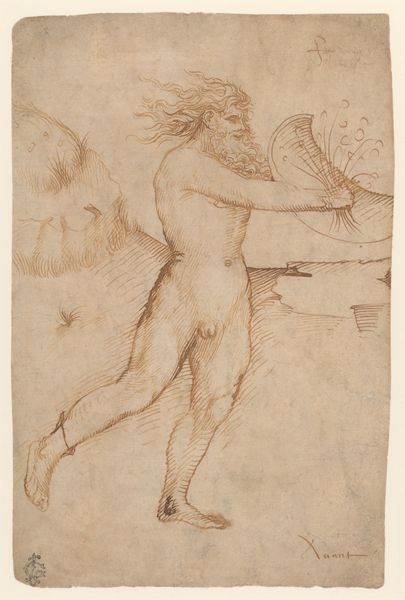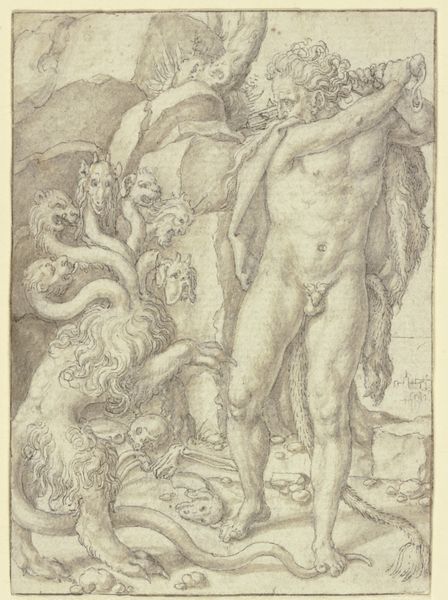
Galatea on her Chariot drawn by Dolphins 1652 - 1725
0:00
0:00
drawing, pencil
#
drawing
#
baroque
#
charcoal drawing
#
figuration
#
pencil
#
nude
#
watercolor
Dimensions: sheet: 7 3/16 x 5 7/8 in. (18.2 x 15 cm)
Copyright: Public Domain
Editor: Here we have Giovanni Battista Foggini's "Galatea on her Chariot drawn by Dolphins," dating roughly from 1652 to 1725. It's a sketch done in pencil and charcoal. The first thing that strikes me is the dynamism, even in this preliminary state. What do you make of it? Curator: Well, look closely at the materials themselves. Charcoal and pencil – these aren’t traditionally the materials of 'high art,' yet Foggini uses them to depict a classical subject. This suggests a breakdown of established hierarchies, a democratization of art production. Consider who had access to these materials versus costly paints and canvases. Editor: So you’re saying the choice of materials might indicate a shift in who was making and consuming art? Curator: Precisely. And think about the production itself. It’s a drawing, a study. Where might this study have led? Was it a preparatory sketch for a more "finished" work, perhaps in marble or bronze? What does the incomplete nature of the drawing suggest about the labor involved, the artistic process as a form of work? And who was the patron? Were they interested in the finished product, or in glimpsing the process itself? Editor: It's interesting to consider this drawing as a record of labor, rather than just a beautiful image. It almost feels subversive in its rawness. Curator: It challenges the myth of the artist as a solitary genius, divorced from the practical concerns of materials and production. Instead, we see evidence of the artist as a worker, grappling with material constraints and engaging in a process. And that changes how we value the art object, doesn’t it? Editor: It certainly does. It reframes the artwork as the product of work rather than inspiration alone. I'll definitely be considering the socio-economic context of artistic materials more closely moving forward.
Comments
No comments
Be the first to comment and join the conversation on the ultimate creative platform.



